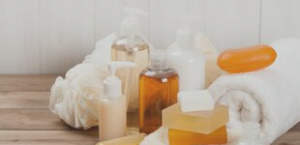As an organization focused on innovation, the PCC Group keeps expanding its range of modern surfactants and chemical formulations that are used in many industries. Investment projects started and planned allow the gradual introduction into the company’s product range innovative products that are based on current trends and customer requirements.

The specificity of surfactants
Surfactants are surface active chemical compounds having a specific structure which lower the surface tension of the liquid. Thanks to this property, the surfactants demonstrate many useful features, enabling their use in virtually every industry.
Surfactants Functions
Because of the surfactants’ role in the specified formula of the product or technological process, they can be divided into the following groups:
- washing substances and detergents (removal of impurities)
- wetting agents (increasing spreadability of the liquid)
- dispersants (comminution of larger particles of the substance into smaller ones)
- foaming agents (foaming capability)
- anti-foaming agents (foam reduction)
- solubilizing agents (increasing the substance solubility)
- emulsifying agents (e.g. combining oil and water)
- demulsifying agents (e.g. separation of water from oil)
- other surfactants.
Surfactants offer
The products offered by the PCC Group can be divided into two main groups:
- surfactants for use in detergents and cosmetics
- surfactants for industrial use
Both above-mentioned groups include products having diversified chemical structure, among which we distinguish:
- anionic surfactants,
- non-ionic surfactants,
- cationic surfactants,
- amphoteric surfactants.
The use of surfactants
The diversity of the surfactant is determined by a wide range of their applications. These compounds are used, for example, as ingredients in detergents, cosmetics, including personal hygiene products, such as liquid soaps, shower gels, shampoos or toothpaste. Thanks to their unique properties, surfactants are also widely used in paper production, food products, paints and varnishes, as well as in the metallurgical, agrochemical, pharmaceutical, mining, textile, construction industries etc.
Some properties of surfactants
Foaminess and foam reduction
The substance foaming ability is of great importance in many industrial applications, such as mineral flotation, obtaining fire extinguishing agents, in the manufacture of detergents, or in the food processing industry, e.g. production of whipped cream.
In detergents, foam prevents redeposition of dirt in laundry and washing processes, while the foam formed after the addition of the bath liquid delays the cooling of a hot bath and gently soothes the body.
In some applications, foaming is undesirable. In such a case, production or technological processes use surfactants with modified chemical structure which retain their essential surface-active properties without generating foam.
Wetting
The wetting can be defined as spreading of liquid droplets on solid surfaces, e.g. cotton material and the ability to penetrate into its pores. When the liquid without the addition of a surfactant is applied onto the surface of the material, it remains thereon in the form of a “drop”. If you take the same amount of pure liquid and add a surfactant, you can notice the difference in the area occupied by this liquid. Thanks to the surfactants’ ability to lower the surface tension, it is possible to quickly soak the fabric in the water and wash it.
Emulsification
Emulsification is simply a process of combining the two immiscible and insoluble liquids, such as oil and water. As a result of the emulsification process, an emulsion is obtained, i.e. a heterogeneous, two-phase dispersion ‘liquid-liquid’ system, i.e. a suspension of droplets of one liquid in another liquid. This system, however, is the most unstable, despite frequent use of vigorous mixing. Therefore, in order to obtain stable emulsions, we use the so-called emulsifiers, which are specially selected surfactants. With emulsifiers and emulsification phenomenon, it is possible to produce not only cosmetics such as creams or lotions, but also to form paints, adhesives, asphalt, or any well-known mayonnaise or ice cream.
Detergency
Detergency is the process of removing dirt. Non-polar portions, i.e. hydrocarbon chains of surfactants, combine with dirt particles to form spherical solution called “micelle”. Micelles form a boundary layer that separates particles of dirt from the surface to be cleaned. This results in the formation of emulsion, which is insoluble in water, so that it is easily removed by washing with water, such as rinsing your hands under the stream of water after using soap.
